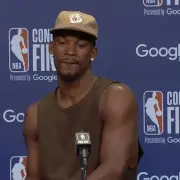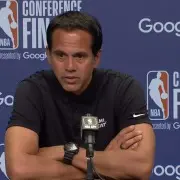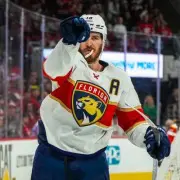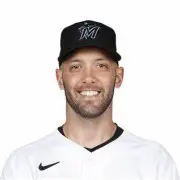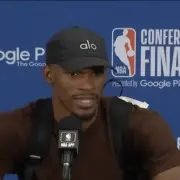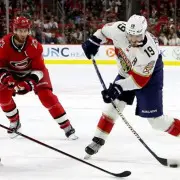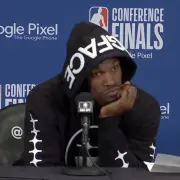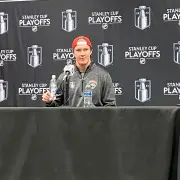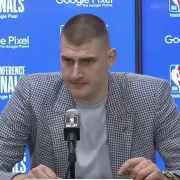Pressure Point: Barkov the reliable engine that drove Florida Panthers to the Cup Final
The two most glaring reasons the Florida Panthers are headed to the Stanley Cup Final are named Matthew Tkachuk and Sergei Bobrovsky.
The indomitable duo, goalie and forward, has supplied the drama at opposite ends of the ice with heart-stopping saves and mind-boggling goals time and again.
The glue between those two, the cohesive link holding it all together, is Aleksander Barkov, the highly skilled workhorse filling every need along 200 feet.
Gratifying to see the captain and longest tenured Panther skating off with the Prince of Wales Trophy as Eastern Conference champs after Tkachuk’s goal with 4.9 second remaining completed a four-game sweep of Carolina to send Florida to its first Cup Final in 27 years — and not giving a damn about the supposed superstition about touching the semifinals trophy.
Barkov has been around for 10 of those seasons, most of them frustrating and forgettable.
He is finally getting recognition from a wide audience that eluded him while playing in one of the most overlooked NHL outposts.
Congrats, Panthers fans
You deserve this pic.twitter.com/JcoUivGCJV— Steve Goldstein #goldieonbermuda419 (@goldieonice) May 25, 2023
Barkov impresses The Great One
It would not be correct to say that Barkov has been underrated. He won a Selke Trophy as the best two-way forward in the league and a Lady Byng given to the top scoring player who commits the fewest penalties.
This year he’s up for the King Clancy Memorial Trophy that goes to “the player who best exemplifies leadership qualities on and off the ice and has made a noteworthy humanitarian contribution in his community.”
But seeing is believing. No less than Wayne Gretzky called Barkov’s highlight-reel goal in Game 2 of the Eastern finals “one of the greatest moves I have seen in the Stanley Cup playoffs.”
Barkov faked sliding the puck between his legs, getting goalie Antti Raanta to commit, then pulled it back and flipped a backhand into the net.
Paul Maurice, in his first year as Panthers coach, said he’d never seen anything like it. But those of us who have watched Barkov for a decade have seen him pull several through-the-legs tricks in shootouts as well as one dazzling in-game goal in 2019 against Montreal Canadiens goalie Carey Price, a likely Hall-of-Famer.
Panthers defenseman Radko Gudas said, “I would not even think of doing anything like that. He is our leader for a reason. He is stepping up in big ways for us. You know, he is the man for the job.”
Barkov’s contributions multifaceted
Theatrical moments aside, the way to best appreciate Barkov is to focus on him throughout a shift. Watch how he powers up and down the ice, as aggressive in the defensive zone as leading a rush. It’s no coincidence that the rest of the Panthers forwards have similarly sold out in support of Bobrovsky.
They needed to in Game 3 after Barkov exited in the first period with a lower-body injury and were able to hold on to a 1-0 win. The Panthers dodged a catastrophic blow to their Cup chances as Barkov was able to return for Game 4 — after a pregame sniff of smelling salts, his line scored in the first 41 seconds on a goal by Anthony Duclair with Barkov getting the primary assist.
It was Barkov who put the puck on Tkachuk’s stick for the series-sealing goal — his 14th points (including four goals) in 16 playoff games.
His contribution extends well beyond the scoresheet. Not only vital to the offense, Barkov is the Panthers’ best penalty killer. His presence is felt in so many areas.
In the four-overtime marathon win in Game 1 of the Eastern finals, Barkov took 50 faceoffs and won 28 (56 percent) while playing over 44 minutes. He had a goal and an assist, three shots on goal, five hits and three takeaways.
Best photos from the best night at @flalivearena
— Florida Panthers (@FlaPanthers) May 25, 2023
Barkov first Finnish Cup captain
Maurice said, “He has the size, really fine hands and the ability to make plays. He is just a very powerful man. Whether it’s an explosion into holes, a puck that gets off his stick hard and we’ve also seen some pretty nice physicality in the playoffs this year.”
Someone on Twitter pointed out that in the Eastern finals, the Panthers outscored Carolina 6-0 with Barkov on the ice while the Hurricanes had a 6-4 edge when he was off.
Barkov is one of those special athletes that fans deserve to see compete for a championship. He was visibly moved when informed that he will be the first Finnish player to captain a team in a Stanley Cup Final. (He is an ethnic Russian who grew up in Finland).
“Wow, I didn’t know that. That means a lot. … It feels great right now. Maybe later, after the season or after the career, maybe I’ll understand what really happened,” he said, adding, “It’s not just [Tkachuk] leading, me leading, it’s everyone in our room, solid brothers. Those guys are the leaders as well.”
Typical of the unassuming star, who Maurice — after the flashy goal in Game 2 — said was “the least showboating player I’ve ever coached by far. Most times he scores, you kind of expect him to skate by the goalie, tap him on the pads and say, ‘Sorry about that.’ But he pulled that move because that was the only move that was going to work. There’s no one-upmanship or showmanship in that man.”
Now an NHL-wide audience has the chance to see what Barkov is all about on the biggest stage.
Barkov was a big reason Tkachuk lobbied for the trade that brought him to the Panthers from Calgary for Jonathan Huberdeau and MacKenzie Weegar.
Panthers find winning playoff formula
At his introductory news conference in South Florida, Tkachuk called Barkov “a top-3 player in the NHL. That’s a fact.”
His is certainly one of three indispensable components of this Panthers drive to the Cup Final as a No. 8 seed. But it extends beyond Tkachuk, Bobrovsky and Barkov, throughout the ranks including gritty forwards such as Sam Bennett and fourth-liners Ryan Lomberg and Eric Staal.
The vibe is completely different than a year ago when the Panthers got swept in the second round of the playoffs after winning the Presidents’ Trophy.
“It’s about being able to wear a team down,” Tkachuk said of the winning formula that surfaced in the first-round series upset of the Boston Bruins, this year’s Presidents’ Trophy winner. “The physicality, and our forechecks are really solid. We’ve got a bunch of speed up front and a bunch of heavy players that can play that way. I think we have 12 forwards that play that way.”
All following the example of their captain.
Craig Davis has covered South Florida sports and teams, including the Panthers, for four decades. Follow him on Twitter @CraigDavisRuns


